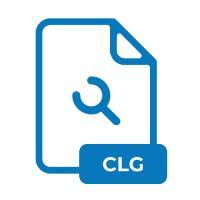.CLG File Extension

Windows Catalog File
| Developer | Microsoft |
| Popularity | |
| Category | Settings Files |
| Format | .CLG |
| Cross Platform | Update Soon |
What is an CLG file?
A .CLG file is a Windows Catalog file used by Microsoft’s Windows operating system to store metadata about various system components, updates, drivers, or software packages. These files help manage and organize the installation, configuration, and maintenance of system components.
More Information.
The .CLG file format was initially introduced with the release of Windows XP and has since been used in various versions of the Windows operating system, including Windows Vista, Windows 7, Windows 8, and Windows 10. Its primary purpose is to facilitate the installation and management of software components, updates, and drivers on Windows-based systems.
Origin Of This File.
The .CLG file format was introduced by Microsoft as part of the Windows catalog infrastructure, which facilitates the deployment and management of system components. The purpose of these files is to provide a centralized location for metadata related to software components, making it easier for system administrators and users to find, install, and update software
File Structure Technical Specification.
.CLG files are typically XML-based and contain metadata such as component names, versions, descriptions, dependencies, and installation instructions. The structure of these files may vary depending on the specific version of Windows and the type of component or update they describe. However, they generally adhere to a standardized schema defined by Microsoft.
How to Convert the File?
Windows:
- Use a text editor or XML editor to open the .CLG file.
- Manually extract the relevant information or metadata from the .CLG file.
- Save the extracted information in a different format, such as plain text, CSV, or another structured format, depending on your needs.
Linux:
- Open the .CLG file using a text editor or XML parser available on Linux, such as Vim, Nano, or Gedit.
- Extract the desired information from the .CLG file.
- Convert the extracted data to a different format using command-line tools or scripting languages available on Linux, such as awk, sed, or Python.
Mac:
- Similar to Linux, open the .CLG file using a text editor like TextEdit or a specialized XML editor.
- Extract the necessary information from the .CLG file.
- Convert the extracted data to the desired format using built-in command-line tools or third-party software available for macOS.
Android:
- Transfer the .CLG file to your Android device.
- Use a text editor or XML viewer app from the Google Play Store to open and view the contents of the .CLG file.
- If necessary, manually extract the information and convert it to a different format directly on your Android device using compatible apps or scripting tools available for the platform.
iOS:
- Transfer the .CLG file to your iOS device.
- Use a text editor or XML viewer app from the App Store to open and inspect the contents of the .CLG file.
- Extract the relevant information and convert it to a different format using apps or scripting tools available for iOS, depending on your specific requirements.
Advantages And Disadvantages.
Advantages:
- Centralized metadata: .CLG files provide a centralized repository for metadata about system components, making it easier for system administrators and users to manage software installations and updates.
- Standardized format: The XML-based format of .CLG files ensures compatibility across different versions of Windows and facilitates automated processing and integration with other software tools.
- Streamlined deployment: By providing detailed information about software components and dependencies, .CLG files help streamline the deployment process and reduce the risk of compatibility issues.
Disadvantages:
- Complexity: Understanding and working with .CLG files may require a certain level of technical expertise, particularly when dealing with complex software configurations or custom installation packages.
- Limited compatibility: .CLG files are primarily designed for use on Windows-based systems and may not be directly compatible with other operating systems or software platforms.
- Dependency management: While .CLG files provide information about dependencies between software components, managing these dependencies manually can be challenging, especially in large or complex software environments.
How to Open CLG?
Open In Windows
.CLG files can be opened in Windows using built-in tools or third-party software designed for managing software installations and updates.
Open In Linux
.CLG files can be opened in Linux using text editors like Vim, Nano, or Gedit, or XML parsers available for the platform.
Open In MAC
.CLG files can be opened in Mac using text editors like TextEdit or specialized XML editors.
Open In Android
.CLG files can be opened in Android using text editor or XML viewer apps available on the Google Play Store.
Open In IOS
.CLG files can be opened in iOS using text editor or XML viewer apps available on the App Store.
Open in Others
.CLG files are not natively supported on other platforms, but they can be opened using compatible text editors or XML viewers, or by transferring them to a platform where they are supported and using the respective tools mentioned above.












